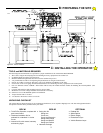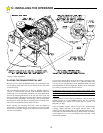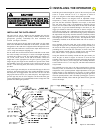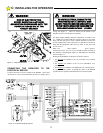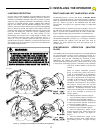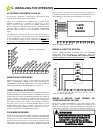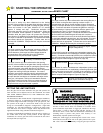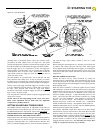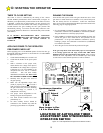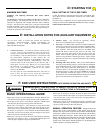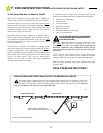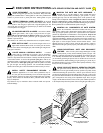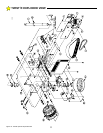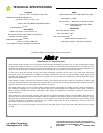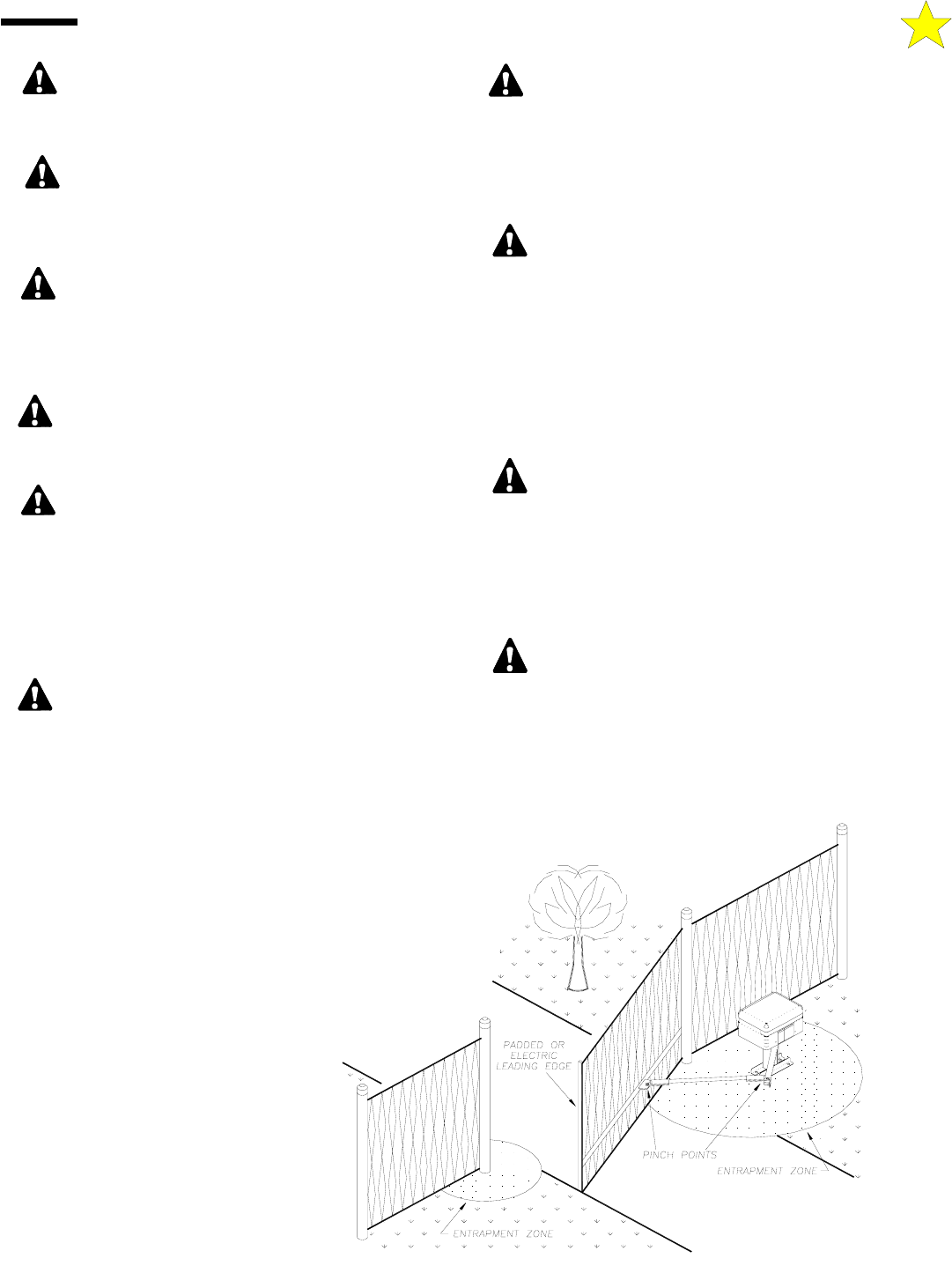
21
AVOID ENTRAPMENT: Stay away from the path of the gate
and all moving parts (gate arms, etc.) at all times. Keep clear of the
pinch points identified below.. Install guards or other safety enhancement
features to prevent access to pinch point areas. Install guards on open
PREVENT PERSONAL INJURY OR DEATH: Do not stand
near or on the gate. Gate may be activated without notice. Do not
allow anyone to “ride” the gate, or place arms or legs through the gate. The
force of the gate can cause serious personal injury or death. No one should
cross the path of a moving gate.
NO CHILDREN OR PETS ALLOWED: Never allow a child to
operate gate controls, “ride” a gate, or play in the area of a gate.
Install and store all controls out of children’s reach. Also, pets must be
kept away from the gate. Install a pedestrian gate in applications where
children or pets need access.
This entrance is for vehicles only. Pedestrians must use a separate entrance.
KEEP GATE IN SIGHT: Never activate the gate unless it is in
sight. Install mounted controls in full view of the gate. Be sure the
gate area is clear before activating the gate, and watch the gate and gate area
as the gate is in motion.
LOCATE MANUAL CONTROLS SAFELY: A manual
control such as a pushbutton or keyswitch must be included in
your gate system design to be used if automatic controls such as radio
controls or loop detectors do not function. Carefully consider the placement
of the manual control: It must be out of reach of the gate so that no one
pushing the button or inserting the card is in the path of the gate or moving
parts; it must also be within sight of the gate so that the operator can watch
the gate and gate area during operation. The recommended minimum
distance between the gate or fence and manual control accessory is 10 feet.
MAINTAIN THE GATE AND GATE HARDWARE: A
damaged gate or one that cannot be easily opened and closed
manually must be repaired before installing a gate operator. A poorly
operating gate may cause the load sensing device of the operator to fail,
causing a risk of entrapment. Never overtighten the clutch or load sensing
device to compensate for a poorly swinging gate. Correct all mechanical
problems on the gate and gate hardware before installing the gate operator.
Have a qualified service technician make repairs to the gate.
MAINTAIN ALL COMPONENTS OF GATE SYSTEM:
Follow the maintenance instructions included with the gate, the
gate operator, and the safety enhancement features and/or accessories that
make up your gate operator system. Have a professional service technician
perform any adjustments or maintenance to the components. Fully test all
safety enhancement features monthly. Discontinue the use of faulty safety
equipment immediately, and have the equipment serviced or replaced by a
qualified service technician The gate must reverse on contact with a solid,
rigid object or when an object activates the non-contact sensors. After
adjusting the force or limits of travel, retest the gate operator. Failure to
adjust and retest the gate operator properly can increase the risk of injury or
death.
KNOW YOUR OPTIONAL GATE ARM DISCONNECT
FEATURE: In the event of a power outage and the gate in a fully
closed position, you may need to manually operate your gate. The
RS4000 is optionally equipped with a keyed padlock to permit the gate arm
to be manually disconnected from the RS4000 operator. This will allow
you to manually push the gate open or close as needed. Be sure to have the
service technician or dealer installing your gate system give you the key to
the padlock and show you how to use this feature quickly and safely. Keep
the key in a safe, accessible place.
F: END USER INSTRUCTIONS GATE OPENER OPERATION AND SAFETY GUIDE
KNOW YOUR GATE MANUAL OPERATION FEATURE:
The gate can be moved open or close in case of power failure or
other need to move the gate manually from any position except fully closed
without disconnecting the operator arm. Remove power from the unit (if
not already off) and firmly grasp the leading edge of the gate. Push or pull
the gate in the direction desired. The amount of force required to move the
gate will depend on the setting of the adjustable torque drive, the gate
weight, and the inherent friction of the overall system. Manual operation is
to be attempted only when the operator is not moving the gate under power.
106503
Figure 23: Pinch Points &
Entrapment Zones
INSTALL SAFETY ENHANCEMENT DEVICES: In
residential applications or in areas where pedestrians may be
present, or if your gate closes automatically, be sure an electric edge(s) and/
or a photoelectric sensor(s) has (have) been installed and is/are operating
properly. These features are intended to detect pedestrian traffic and avert
injury or entrapment.
Loop detectors may be installed to detect vehicular traffic and prevent
vehicular damage.



